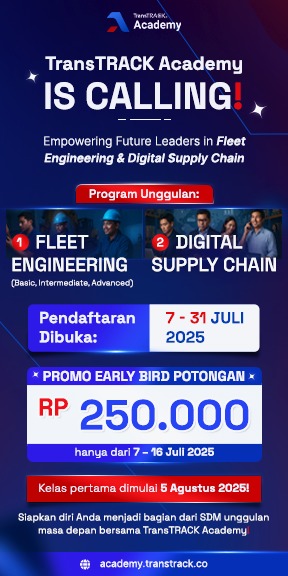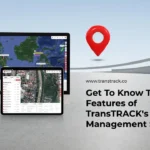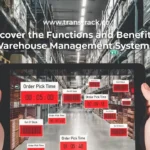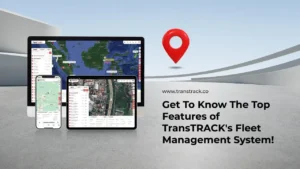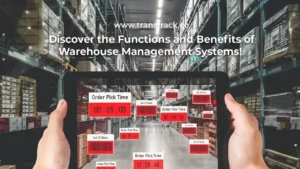Unveiling the Process Flow, Functions, and Types of Order Fulfillment!
Posted on July 6, 2023 by Nur Wachda Mihmidati

Fulfillment, or the act of fulfilling, is the process of meeting or completing customer orders or requests by delivering the requested products or services in a timely manner and in the desired condition. The fulfillment process involves several actions that need to be carried out, including order processing, product or service preparation, packaging, and delivery to the customers.
In the context of business, fulfillment is often associated with e-commerce and logistics operations, where companies need to ensure that the products ordered by customers are delivered quickly and efficiently, and in good condition. In this regard, fulfilling also encompasses shipping, order tracking, and handling of product returns if necessary. Good fulfillment quality can help improve customer satisfaction and build customer loyalty, making it crucial for businesses to pay attention to and enhance their fulfilling processes.
Functions of fulfillment
The fulfilling function plays a crucial role in ensuring business success, particularly in e-commerce and logistics operations. Some important functions of fulfilling include:
Order processing
Fulfillment is responsible for processing customer orders and ensuring that order information and details are received and managed correctly.
Product preparation
Fulfillment is also responsible for preparing the products or services ordered by customers, including retrieving products from the warehouse, packaging them, and correctly labeling the products.
Product shipping
Fulfillment ensures that products or services are delivered to customers according to the promised time and in the condition expected by the customers.
Order tracking
Fulfillment also needs to track customer orders and provide necessary information about shipping status or order progress to the customers.
Handling of returns
Fulfilling should be prepared to handle product or service returns in case of issues or errors in the orders.
By ensuring that the fulfilling functions run smoothly, businesses can enhance customer satisfaction, strengthen brand reputation, and build customer loyalty, which can reinforce market share and business growth.
The flow of fulfillment process in business
The flow of fulfilling process in business can be described as follows:
Picking
The first stage in the fulfilling process is picking the items from the warehouse or storage location. The items picked must match the customer’s order and should be accurately recorded for further processing.
Inventory management
After the items are picked, the next step is inventory management. This process involves recording the quantity of items picked and the remaining stock in the warehouse, managing inventory levels, updating the inventory database, and monitoring the available inventory levels.
Packing
Once the items are well managed, they need to be prepared for shipment to the customers. This stage involves proper packaging of the items, ensuring strong and secure packaging, and correctly adding shipping labels and invoices.
Shipping
The final step in the fulfilling process is shipping the items to the customers. This stage involves processing orders for shipment, selecting appropriate shipping methods based on customer preferences, and ensuring the items are delivered in a timely manner and in good condition.
In the flow of the fulfilling process, all stages need to be managed correctly and efficiently to ensure timely delivery of items to customers and meet their expectations. In larger business operations, fulfilling processes can be supported by technology and inventory management systems that help improve the speed, efficiency, and accuracy of fulfilling processes.
[display-post-read-also]
The term Fulfillment in Business
Here is an explanation of some terms related to fulfillment in business:
Fulfillment Center and Fulfillment Warehouse
A Fulfillment Center and a Fulfillment Warehouse are storage and management facilities used for the process of fulfilling customer orders. A Fulfillment Center typically refers to larger facilities that may serve multiple businesses or brands, whereas a Fulfillment Warehouse may be smaller and more focused on the needs of specific businesses.
Order fulfillment
Order fulfillment is the process of correctly fulfilling customer orders, including picking, packing, and delivering products to customers. Order fulfillment involves several stages such as item picking, inventory management, packaging, and item shipment.
Fulfillment Services
Fulfillment Services are services offered by companies to assist businesses in the process of fulfilling customer orders. Fulfillment Services may include various stages such as item picking, inventory management, packaging, shipping, and handling of product returns.
Self Fulfillment
Self Fulfillment is the process of fulfilling customer orders by the business itself, without the assistance of a third party. In self fulfillment, the business is responsible for all stages of order fulfilling, including item picking, inventory management, packaging, and item shipment. Self fulfillment can be done by small or medium-sized businesses with limited resources, or by larger businesses with adequate infrastructure and resources to handle fulfillment internally.
Choosing the appropriate type of fulfilling can have a significant impact on service quality and customer satisfaction. Therefore, it is important for businesses to consider their needs and select the right fulfilling strategy to meet those needs.
Types of Order Fulfillment in Business
Here is an in-depth explanation of the types of order fulfilling in business:
Make-to-order (MTO)
Make-to-order is an order fulfilling strategy that involves producing goods only after receiving customer orders. In MTO, businesses do not keep finished goods inventory but manufacture products according to customer demand. Therefore, the production lead time in MTO tends to be longer, but it provides greater flexibility in meeting different customer demands.
Engineer-to-order (ETO)
ETO is a type of order fulfilling where products are made based on customer-specific requirements. In ETO, products are custom-designed and tailored to meet the unique needs of customers. The production process in ETO often involves the involvement of engineering or design experts who help develop products according to customer demands.
Digital copy (DC)
Digital copy is a type of order fulfilling that focuses on digital products such as ebooks, music, or videos. In DC, digital products are delivered directly to customers through downloads or direct delivery via email. DC provides advantages in terms of lower production costs and faster delivery.
Make-to-stock (MTS)
Make-to-stock is a type of order fulfilling that produces goods with inventory stored prior to receiving customer orders. In MTS, businesses attempt to predict customer demand and produce products in sufficient quantities to meet the likely customer demand. Therefore, businesses must have effective inventory management systems to ensure that products are always available to meet customer demand.
Assemble-to-order (ATO)
Assemble-to-order is an order fulfillment strategy where products are assembled from various components or parts stored in inventory. In ATO, businesses assemble products according to customer demand using available components in inventory. ATO provides flexibility in meeting different customer demands but also requires tight inventory management to ensure the availability of necessary components.
Choosing the right type of order fulfillment is highly dependent on the business needs and characteristics of the products being sold. When selecting the appropriate order fulfillment strategy, businesses should consider factors such as production costs, delivery times, inventory levels, and customer needs.
In business, maintaining customer satisfaction is crucial. One factor that can affect customer satisfaction is an efficient and timely order fulfillment process. In this regard, TransTRACK’s Fleet Management System can be the right solution to help streamline the fulfillment process and optimize product delivery.
TransTRACK’s Fleet Management System is a platform that assists businesses in effectively and efficiently managing their product deliveries. By utilizing GPS technology and features such as tracking and monitoring, TransTRACK’s Fleet Management System helps businesses optimize delivery routes, reduce operational costs, and expedite the product delivery process.
Additionally, TransTRACK’s Fleet Management System is equipped with features like driver management and inventory management, which assist businesses in overseeing the overall operations of their product deliveries.
By utilizing the Fleet Management System from TransTRACK, businesses can expedite the fulfillment process and enhance customer satisfaction. Don’t hesitate to leverage this solution to help optimize your product delivery operations and improve your business performance.
Recent Post
Topic :
logisticorder fulfillmentself fulfillment
 Bahasa Indonesia
Bahasa Indonesia


